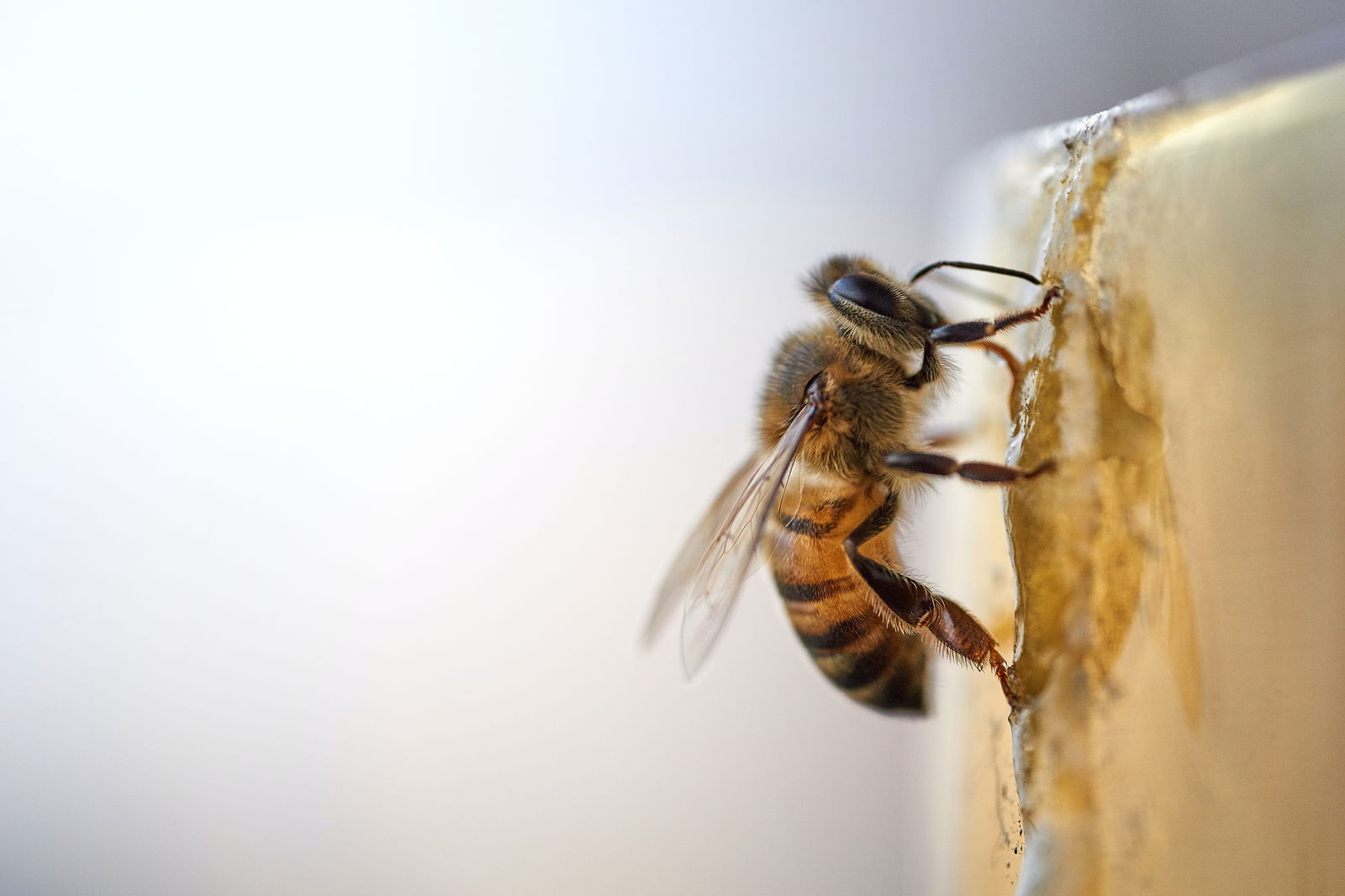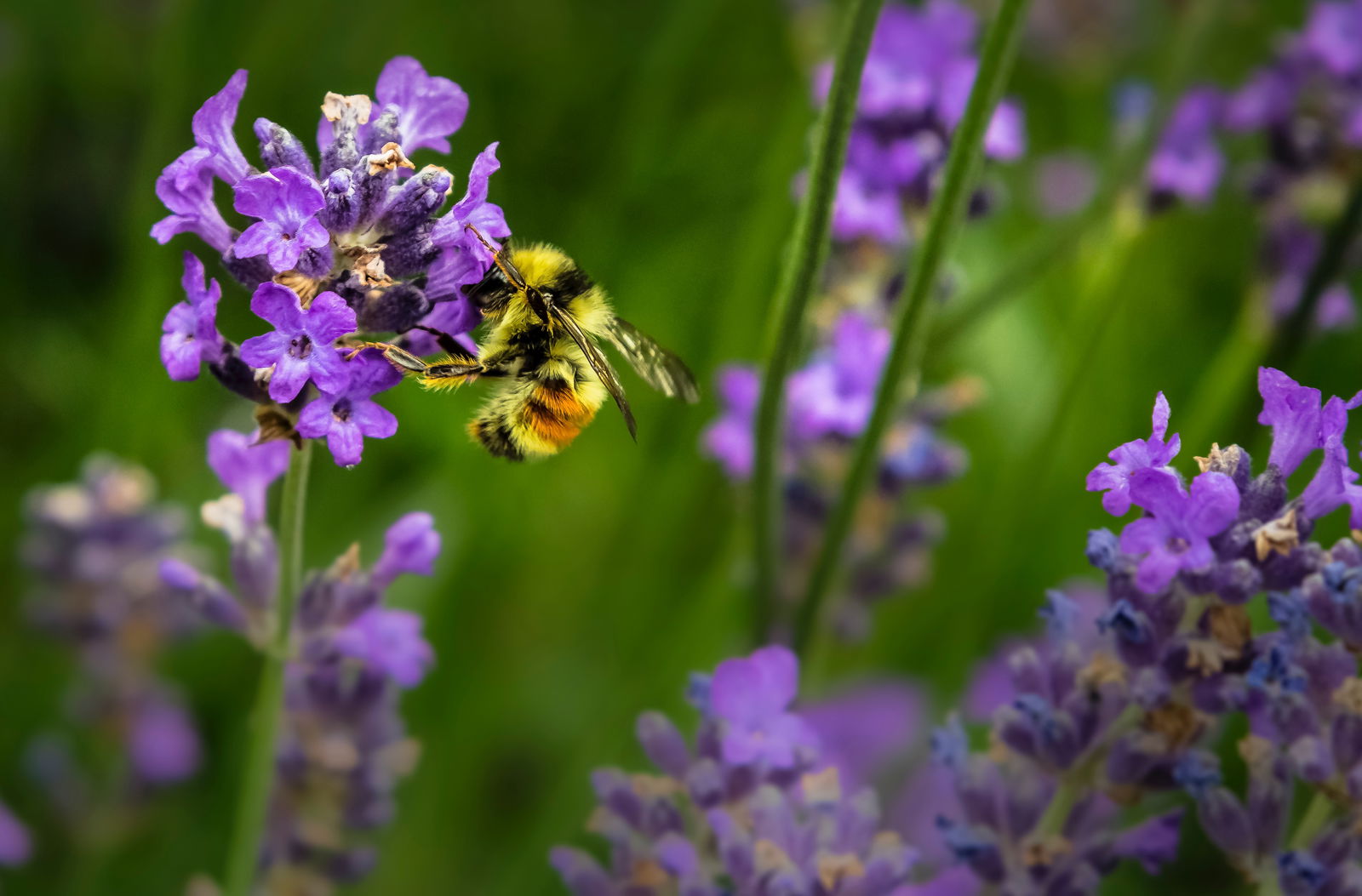Are honey bees endangered? Discover the essential facts you must know about their perilous status


· 11 min read
This article is part of our series to spread free & quality sustainability knowledge for all. Compare on Data Hub™ the sustainability performance of companies tackling biodiversity: BASF, Syngenta, Corteva Agriscience, Comvita and Honeywell.
Honey bees are crucial components of our ecosystem. With their remarkable ability to pollinate, they play a pivotal role in fostering food production and supporting diverse ecosystems. However, the global reports of declining honey bee numbers have raised serious concerns in recent years.
In this article, we delve into the pressing question of whether honey bee populations are truly diminishing and if certain bee species teeter on the brink of extinction. Furthermore, we examine the underlying factors that contribute to the dwindling populations of honey bees, including the impact of modern agriculture, natural disasters, and the effects on other species and native species.
While bee populations have dwindled worldwide since the 1990s (Zattara & Aizen, 2021), some species are more vulnerable to extinction than others. Here are some bees at risk of extinction:

Fortunately, not all bees are endangered. However, many bees are experiencing serious population declines. Next, we'll explore some issues endangering bees and causing their populations to dwindle.

There are various reasons why bee numbers are dwindling worldwide and why some species are at risk of extinction. Here are some key reasons why bees are endangered:
For instance, the U.S. has lost up to 99% of tallgrass prairie over the past two centuries, primarily to industrial agriculture (Kline & Joshi, 2020). This has resulted in a significant decline in bumble bee numbers, as prairies are an important bee nesting site.
Some studies also postulate that pesticides can cause Colony Collapse Disorder (CCD) — a condition where worker bees in a colony lose their sense of direction and can't navigate back to the hive, resulting in their demise (bee-health, 2019).
For instance, the Varroa mite, which came to the U.S. from Asia, is a huge threat to honey bees in America because honey bees in the U.S. aren't naturally adapted to protect themselves against the mite.
Extreme weather conditions, such as droughts and floods, can also impact bees because they can result in food scarcity and prevent bees from reproducing. For instance, in the U.K., rising water levels threaten the existence of sea aster mining bees (Jackson, 2019).
Concerns about the decline of bee populations have echoed across the globe because bees play a critical role in our ecosystems. Here are some reasons why bees are so important:
Food Security: Bees are essential to food chains because they pollinate a variety of fruits and vegetables. For instance, blueberries and cherries rely heavily on honey bees for pollination (Petruzzello, n.d.). Without honey bees, these plants wouldn't survive. As a result, without bees, the availability of many nutritious and commercially important crops would be severely threatened.
Biodiversity: Bees are highly efficient pollinators. As a result, they promote the survival of various plants by helping them to reproduce. Bees also provide food for other wildlife, including birds and insects, further promoting biodiversity. For instance, bee-eater birds depend on bees for food.

Ecological Balance: Bees promote ecological balance. They help decompose organic matter, promoting nutrient recycling and soil health. Bees also pollinate crops that provide shelter and food for other animals, promoting ecological balance.
Honey Production: Honey bees are prized for producing honey — a natural sweetener with medicinal properties. The production of honey also contributes to economic growth because honey provides income for beekeepers and companies.
Honey bees aren't vulnerable to extinction because they are a managed species that beekeepers keep for honey. However, several wild bees are on the verge of extinction or facing significant population declines.
For example, the Rusty Patched Bumble Bee (Bombus affinis) is critically endangered in the U.S. and Canada.
India has the most honey bee hives at just over 12 million, followed by China with roughly nine million.
We can prevent the decline or loss of bees by protecting natural bee habitats, promoting sustainable agricultural practices, creating awareness about the importance of bees, and advocating for policy changes.
We can also protect bees from extinction by supporting local beekeeping associations that promote bee-friendly practices and purchasing local honey to provide local beekeepers with income to support themselves.
Various insecticides, fungicides, and herbicides are harmful to honey bees. Neonicotinoid insecticides, such as imidacloprid, clothianidin, and thiamethoxam, are especially harmful to honey bees because they can affect their reproduction, navigation, and nervous systems.
The rapid decline of bee populations or their extinction would have dire implications for ecological systems and human society. Some serious ramifications would include declining food supply and losing biodiversity.
The decline or loss of bees would also have significant economic consequences because the agricultural sector relies heavily on bees for pollination. As a result, a decrease in crop yields would lead to serious financial losses for farmers, reduced agricultural productivity, and increased food costs for consumers. Additionally, the honey industry and other bee-related industries would also be affected.
illuminem's Data Hub™ tracks leading companies in the protection of pollinators and biodiversity, such as BASF, Syngenta, Corteva Agriscience, Comvita and Honeywell, which are making strides in sustainable agriculture and protecting bee populations.
While bees are highly efficient pollinators, there are various alternatives to pollination without bees. These techniques include hand, wind, mechanical and drone pollination.
Nonetheless, these pollination techniques aren't a perfect substitute for bee pollination. While they can mimic bee pollination, they may not wholly replicate the effectiveness and efficacy of bees as pollinators.
Bees are highly efficient pollinators that are vital to ecosystems and human society. Without them, there would be a decline in food supply and biodiversity. As a result, we can't afford to take the issues causing dwindling bee populations lightly.
We must all unite and make a concerted effort to address the issues endangering bees, such as climate change, habitat loss, unsustainable agricultural practices, diseases, and invasive species. By addressing these issues, we can contribute to the protection of bees and the preservation of our natural ecosystems for future generations.
illuminem's Data Hub™ tracking sustainability performance data of biodiversity leaders: BASF, Syngenta, Corteva Agriscience, Comvita and Honeywell.
Zattara, E. E., & Aizen, M. A. (2021). Worldwide occurrence records suggest a global decline in bee species richness. One Earth, 4(1), 114–123. https://doi.org/10.1016/j.oneear.2020.12.005
Bombus affinis | U.S. Fish & Wildlife Service. (n.d.). FWS.gov. https://www.fws.gov/species/rusty-patched-bumble-bee-bombus-affinis
Endangered Species Listing Warranted for 7 Species of Hawaiian Yellow-faced Bees | U.S. Fish & Wildlife Service. (2011, September 6). FWS.gov. https://www.fws.gov/story/2011-09/endangered-species-listing-warranted-7-species-hawaiian-yellow-faced-bees
Endangered and Threatened Wildlife and Plants; Endangered Species Status for Franklin’s Bumble Bee. (2021, August 24). Federal Register. https://www.federalregister.gov/documents/2021/08/24/2021-17832/endangered-and-threatened-wildlife-and-plants-endangered-species-status-for-franklins-bumble-bee
Kuhlmann, M. 2014. Megachile pluto. The IUCN Red List of Threatened Species 2014: e.T4410A21426160. https://dx.doi.org/10.2305/IUCN.UK.2014-1.RLTS.T4410A21426160.en. Accessed on 17 May 2023.
Kline, O., & Joshi, N. K. (2020). Mitigating the Effects of Habitat Loss on Solitary Bees in Agricultural Ecosystems. Agriculture, 10(4), 115. https://doi.org/10.3390/agriculture10040115
bee-health. (2019, August 20). Pesticides and Their Involvement in Colony Collapse Disorder – Bee Health. https://bee-health.extension.org/pesticides-and-their-involvement-in-colony-collapse-disorder/
Jackson, L. (2019) East of England Bee Report: A report on the status
of threatened bees in the region with recommendations for conservation action. Buglife - The Invertebrate Conservation Trust, Peterborough. https://www.wwf.org.uk/sites/default/files/2019-05/EofE%20bee%20report%202019%20FINAL_17MAY2019.pdf
Petruzzello, M. (n.d.). What Would Happen If All the Bees Died? Encyclopedia Britannica. https://www.britannica.com/story/what-would-happen-if-all-the-bees-died
illuminem briefings

Biodiversity · Sustainable Lifestyle
Barnabé Colin

Biodiversity · Nature
illuminem briefings

Biodiversity · Nature
BBC

Biodiversity · Climate Change
The Jerusalem Post

Biodiversity · Climate Change
Mirage News

Corporate Sustainability · Biodiversity